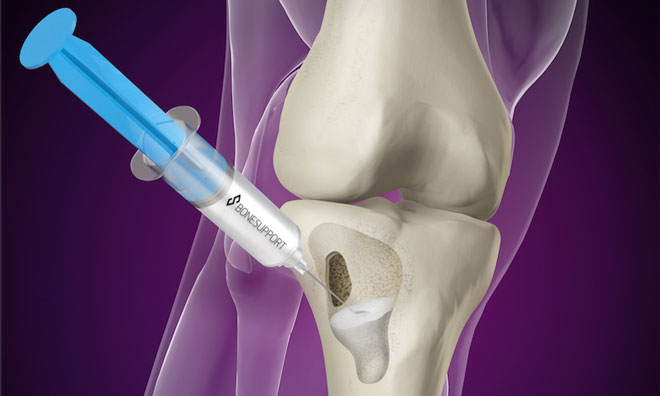Bonesupport enrols first patient in injectable bone graft substitute trial
Posted: 22 May 2017 | | No comments yet
Bonesupport, the Scandinavian medical technology company, has enrolled their first patient at the University of Texas Health Science Center at San Antonio into the company’s pivotal Investigational Device Exemption (IDE) trial. Cerament G is an injectable antibiotic-eluting bone graft substitute that has proven remodelling capabilities and provides local sustained delivery of gentamicin. The data from […]


Bonesupport, the Scandinavian medical technology company, has enrolled their first patient at the University of Texas Health Science Center at San Antonio into the company’s pivotal Investigational Device Exemption (IDE) trial.
Cerament G is an injectable antibiotic-eluting bone graft substitute that has proven remodelling capabilities and provides local sustained delivery of gentamicin. The data from the trial will support Bonesupport’s PMA (Premarket Approval) filing for Cerament G in the US.
In spite of modern day care of open tibial fractures, bone loss coupled with wound contamination and soft tissue damage continue to impair healing and recovery, particularly if infection develops. In addition, open tibial fractures result in a general infirmity, long-term disability and reduction in quality of life for patients, and a significant clinical challenge for orthopaedic surgeons.
Trial endpoints
The trial will assess Cerament G’s ability to improve on the standard-of-care management of patients with open fractures of the tibial diaphysis. The primary endpoints of the trial will include the absence of deep infection at the fracture site and the lack of secondary procedures intended to promote fracture union. The trial will also evaluate the safety of Cerament G in these patients. The trial will enrol up to 230 patients at up to 30 centres in the US and Europe.
Dr Douglas Dirschl, the trial’s Principal Investigator, said: “I am excited to take part in the clinical trial. The open tibial fracture remains the most common and one of the most troublesome open fractures managed by orthopaedic surgeons. Even with modern treatment protocols, patients suffering this fracture continue to be at substantial risk of infection, fracture non-union, and prolonged disability.
A product that could be inserted into the fracture site at the time of definitive treatment that could promote bone formation at the same time as reducing the risk of subsequent infection, would be a major advance in the treatment of these troublesome fractures and would have the potential to provide benefit to thousands of patients each year in the US.”
Douglas Dirschl, MD is the Lowell T. Coggeshall Professor of Orthopaedic Surgery and Chairman, Department of Orthopaedic Surgery and Rehabilitation Medicine at The University of Chicago Medicine.
“The treatment of the first patient in the trial is another key corporate milestone for Bonesupport.
This clinical trial in a complex trauma indication is designed to demonstrate proof-of-concept that Cerament G can be used to improve and protect the healing process in open bone fractures in combination with standard procedures, minimising the risk of deep infections which would result in the need for additional remedial procedures,”
added Richard Davies, CEO of Bonesupport.
“We plan to use the clinical data to support our planned PMA filing for Cerament G in the US. We also intend to generate additional clinical data with Cerament G to gain a broad US label for this novel, injectable antibiotic-eluting bone graft substitute, which is rapidly being adopted in Europe.”
Formulation
Cerament G combines the bone healing and bone remodelling properties of Cerament with the antibiotic, gentamicin. Cerament G drug-eluting properties enable it to provide an initial high concentration of gentamicin to the environment of the bone fracture and then a longer sustainable dose above the minimum inhibitory concentration of many of the bacteria that could cause a bone infection at the fracture site. This unique antibiotic-eluting profile helps protect the bone healing process and to promote bone remodelling.
Cerament G received the European CE Mark in February 2013 and is now marketed in 19 countries outside the US.




